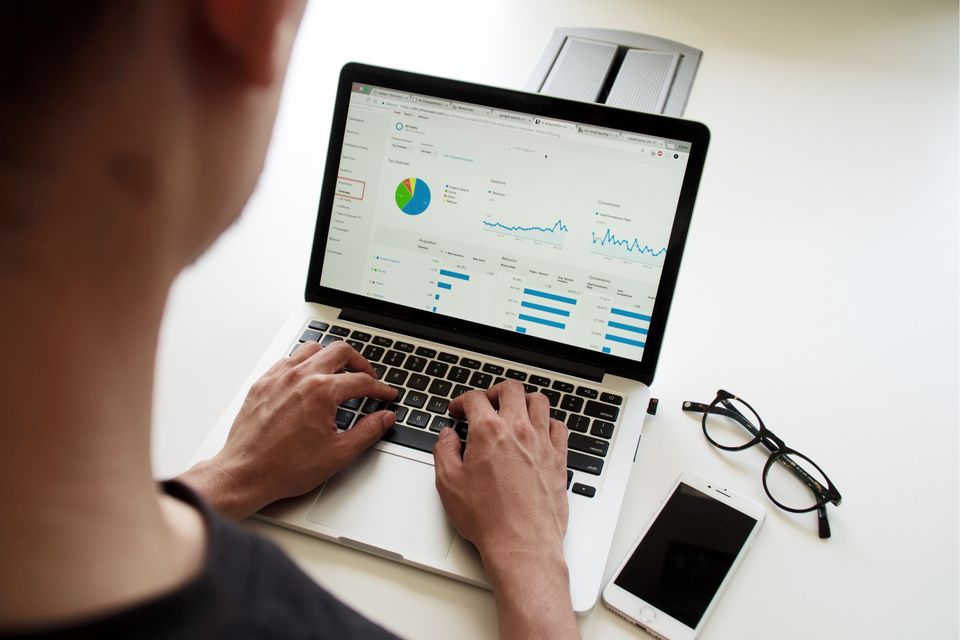9 Common Website Traffic Stats Explained
With over 5.07 billion daily Internet users worldwide, your website has access to a large pool of potential customers. To tap into this audience, first assess whether your site attracts those visitors - start by reviewing your website statistics.
These are the numbers that show how many people visit your site and what they do while they're there. Web stats can help you see how well your marketing efforts are working. You can gauge whether they're generating traffic or not.
But these metrics are only useful if you know how to interpret them. Read on for a breakdown of the top website traffic stats and what they mean for your business.Why Are Website Stats Important?Your website stats will tell you a lot about how your business is performing. They identify areas of improvement - such as pages with low engagement where visitors aren't staying long enough to explore your content.
By analyzing these metrics, you can pinpoint what needs adjustment to boost conversions and keep users engaged.Website Traffic Stats ExplainedIf you want to improve traffic and engagement, start by assessing your website's current performance. Gather website statistics from tools like Google Analytics and other platforms. The metrics below are among the most common. 1. Unique VisitorsUnique visitors is a metric that shows the total number of first-time users who visit your site, excluding repeat visits. For example, if someone visits your website 10 times in one day, it counts as a single unique visitor.
Within a 30-day period, returning to the site after a day still counts as one unique visitor, thus helping you gauge the size of your audience.2. Website Visits (Or Sessions)Website visits are recorded each time a user requests a page from your server- counting as one visit per page load. If someone browses your site 48 times in 30 minutes, you'll have 48 visits recorded.
A session represents the duration a user actively explores your site. Marketers use session data to measure engagement and the effectiveness of site navigation.3. Total Page ViewsTotal page views are the total number of times that any page has been viewed from your site, including repeat views within a single visit. For example, one visitor browsing 10 pages in a session will get counted as one visitor, but with a total of 10 page views.4. Pages Per VisitPages per visit is a metric that measures how engaged your site's visitors are with your content. It's calculated by dividing the total number of page views by the total number of visitors.
A high pages-per-visit (P/V) ratio is an indicator that users are viewing and interacting with your content - a great sign that your website is effectively converting traffic into leads or customers.5. Average Time on Site (Or Average Session Duration)Average time on site measures how long visitors stay on your website, calculated by dividing the total time spent by the number of visitors.
A high average is an indicator that people are spending a lot of time interacting with your content and not just clicking through quickly. For example, an hour-long visit suggests a strong interest compared to a fleeting 30-second glance.
Keep in mind, the average session duration is about one minute across industries - so exceeding this benchmark is a sign of compelling content.6. Bounce RateThe bounce rate measures the number of visitors who leave a website after viewing just one page. It tells you whether people are engaging with your content and if it is meeting their needs.
A bounce rate below 40% is great and means that your website has an attractive and engaging experience.7. Mobile Site VisitsMobile traffic refers to visitors who access your website via smartphones or tablets - accounting for over 50% of internet usage.
If you notice that your mobile site visits are low, check to see if the website loads quickly on handheld devices and features a responsive, small-screen-friendly design.8. Inbound LinksInbound links are external websites linking to your pages. Links from other sites to your own are a signal to Google that you're a reputable source of information. As such, it will boost your search rankings and visibility.
That being said, not all backlinks are equal. While each one counts toward your SEO ranking, not all inbound links will give you the same boost as others.9. Traffic SourcesTraffic sources are the channels that drive visitors to your website, divided into organic and paid categories.
Organic traffic is free and comes from search engines like Google, social media like Facebook and Twitter, email campaigns, and other unpaid efforts. Paid traffic can be anything from pay-per-click (PPC) ads on search engines to sponsored campaigns on social media platforms.Create a Website That Attracts and Engages VisitorsYour website traffic stats are an important part of your SEO. If you want to improve your metrics, ensure that users can easily navigate your website and find what they're looking for. Implement a clean design with plenty of white space and clear navigation menus.
Building a professional, user-friendly site takes expertise. Why take on the hassle when our agency will do it for you? Contact our team of designers today to learn more about how we can help you build an impressive website that drives traffic and conversions.


